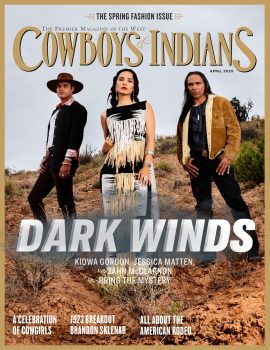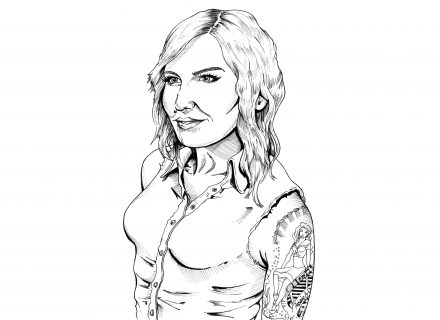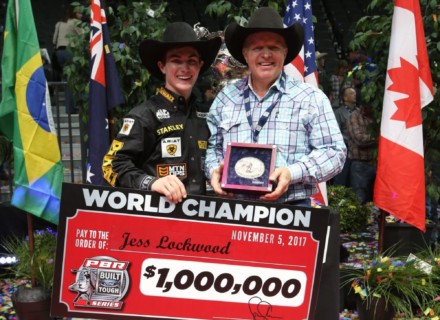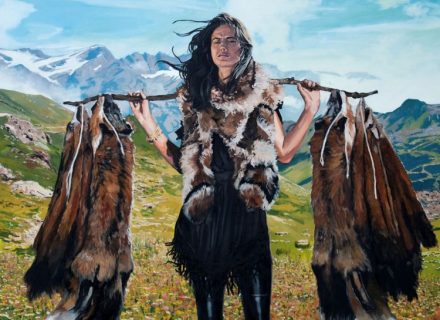“No offense to Larry McMurtry or his prose,” says Nathan Jones, former chief curator at The Bryan Museum in Galveston, Texas, “but Lonesome Dove was written partially just because Charles Goodnight lived and did the things that McMurtry fictionalized.
There are only a few major points of embellishment in the book. Goodnight’s life — from the shape of the American West to the shape of Texas — had a huge influence on cowboy culture, even the chuck wagon. Things that you think of as intrinsically cowboy come from Charles Goodnight.”
When painter Lee Cable agreed to come out of retirement to document Goodnight’s life in oils, he felt the weight of that history. “I went out and got a couple books on him,” Cable says. “After reading, I came up with more than 90 possibilities for paintings about this man and his life. ... This was a cowboy, this was a man of the West. If you wanted to find out what it was like living in the Western frontier during that time, you couldn’t find a better person. He was an Indian fighter, scout, cattle driver, cowboy, cattle breeder, and rancher — he had it all, in one life span. He became a hero. Reading his true-life history gave me a better understanding of the hazards and perils that you didn’t get in the Hollywood cowboy.”
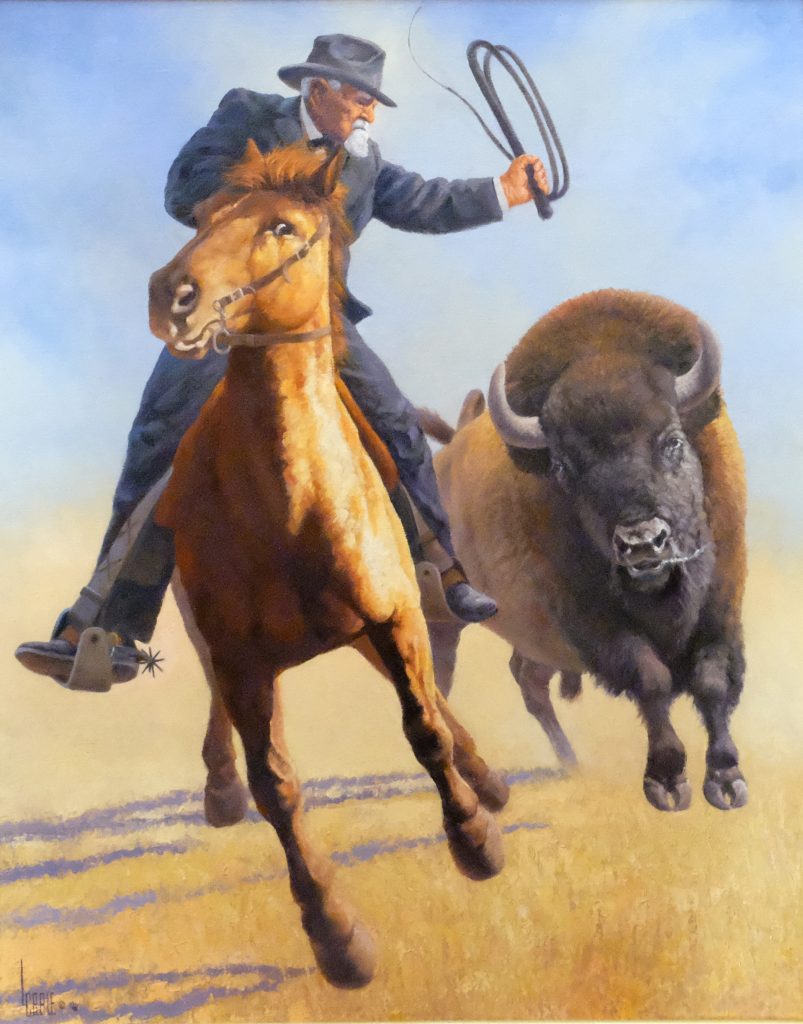
In addition to 12 history paintings and 12 companion pencil sketches by Cable, the exhibition The Life and Times of Charles Goodnight includes artifacts from the collection of the Panhandle Plains Museum. “We’ve got a Goodnight design sidesaddle; one of Goodnight’s personal saddles; Goodnight’s long rifle from his time as a Texas Ranger, which has a lovely inscription on it: ‘Seek ye first the kingdom of God and His righteousness and all these things shall be added unto you.’ There are JA and Quitaque (Lazy F) Ranch branding irons, as well as Quanah Parker’s 1873 Winchester rifle, and a selection of historic photographs,” Jones says.
Cable wanted the painting to convey the cowboy way — “the honesty and the way they stick to their word. It shows the compassion of Charles for his cowboys and for his friends,” Cable says.
The paintings portray everything from Goodnight’s evolution into one of the most prosperous cattlemen in the West to his relationship to bison (first removing them from his land, then presevering them) to his close friendship with Quanah Parker. But both artist and curator particularly like the painting A Promise Made, a Promise Kept, which depicts the funeral cavalcade Goodnight led from New Mexico to return the body of his partner, Oliver Loving, to Weatherford, Texas. “I think it is the point where most people are familiar with Charles Goodnight and his fictional character, Woodrow Call, from Larry McMurtry’s Lonesome Dove,” Jones says. “The plot of Lonesome Dove really revolves around the death of Oliver Loving on the trail and the promise to bring his body back to Texas.” The recognition and emotional resonance of that friendship made the funeral cavalcade piece a natural selection for the exhibition’s signature.
Cable wanted the painting to convey the cowboy way — “the honesty and the way they stick to their word. It shows the compassion of Charles for his cowboys and for his friends,” Cable says. “He always had a great support and love for the people that he worked with. To make a promise to a dying friend that, ‘Look, I have to go and finish business, but I’ll come back and take your body back home’ — that was quite a commitment. I’m not sure many people would have followed through with that, but he did. He had a special wagon constructed and a special casket built to bring his buddy’s body back to Texas. The imagery had to be strong. I used the sunset as a backdrop to get the feeling across of the end of a day, the end of a life.”
The Life and Times of Charles Goodnight is on view at The Bryan Museum through October 14 in Galveston, Texas; it will be on view November 16, 2018 – April 22, 2019, at the Cattle Raisers Museum in Fort Worth, Texas.
Photography: A Promise Made, A Promise Kept by Lee Cable/Courtesy The Bryan Museum; A Good Idea Gone Bad by Lee Cable/Courtesy The Bryan Museum.













